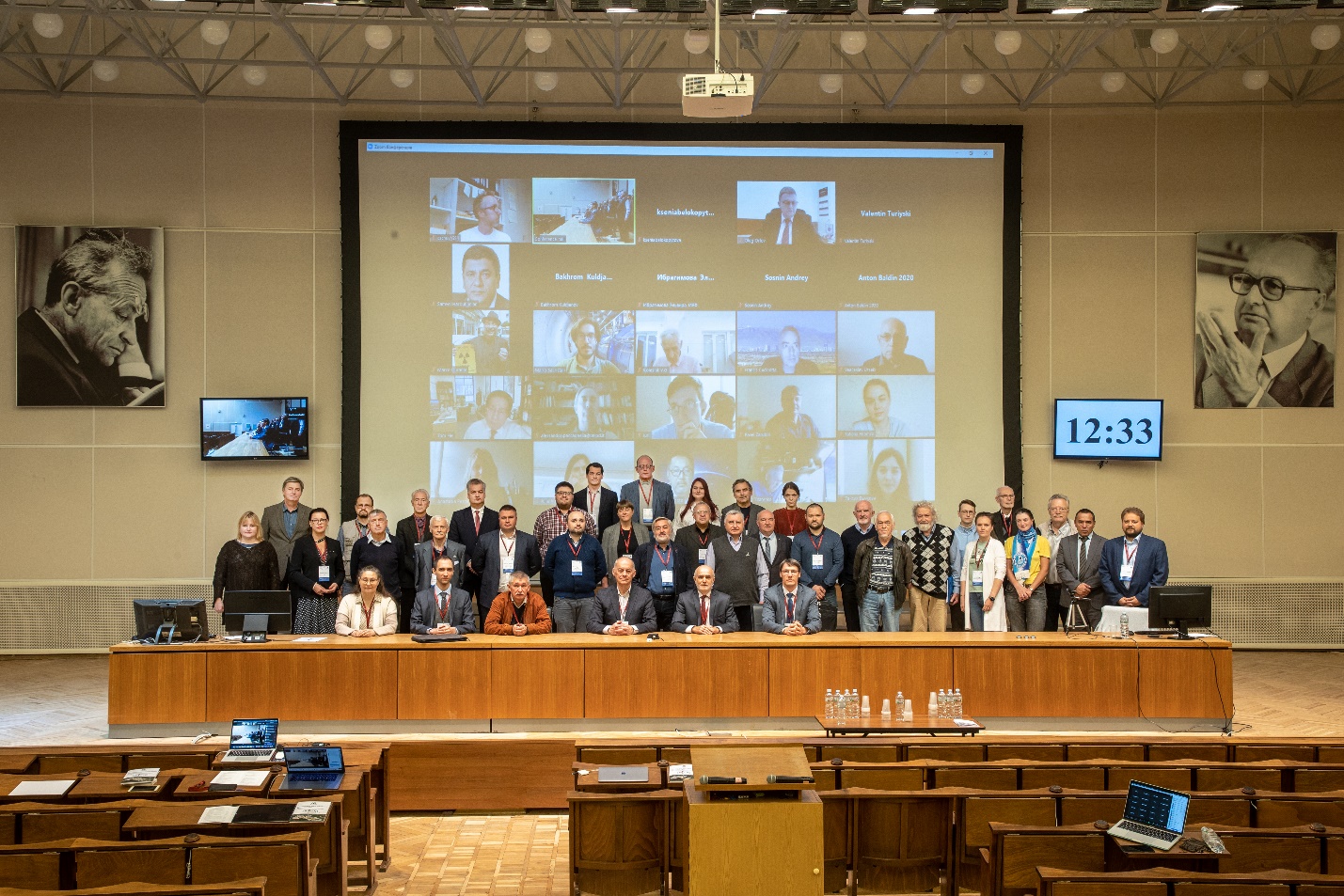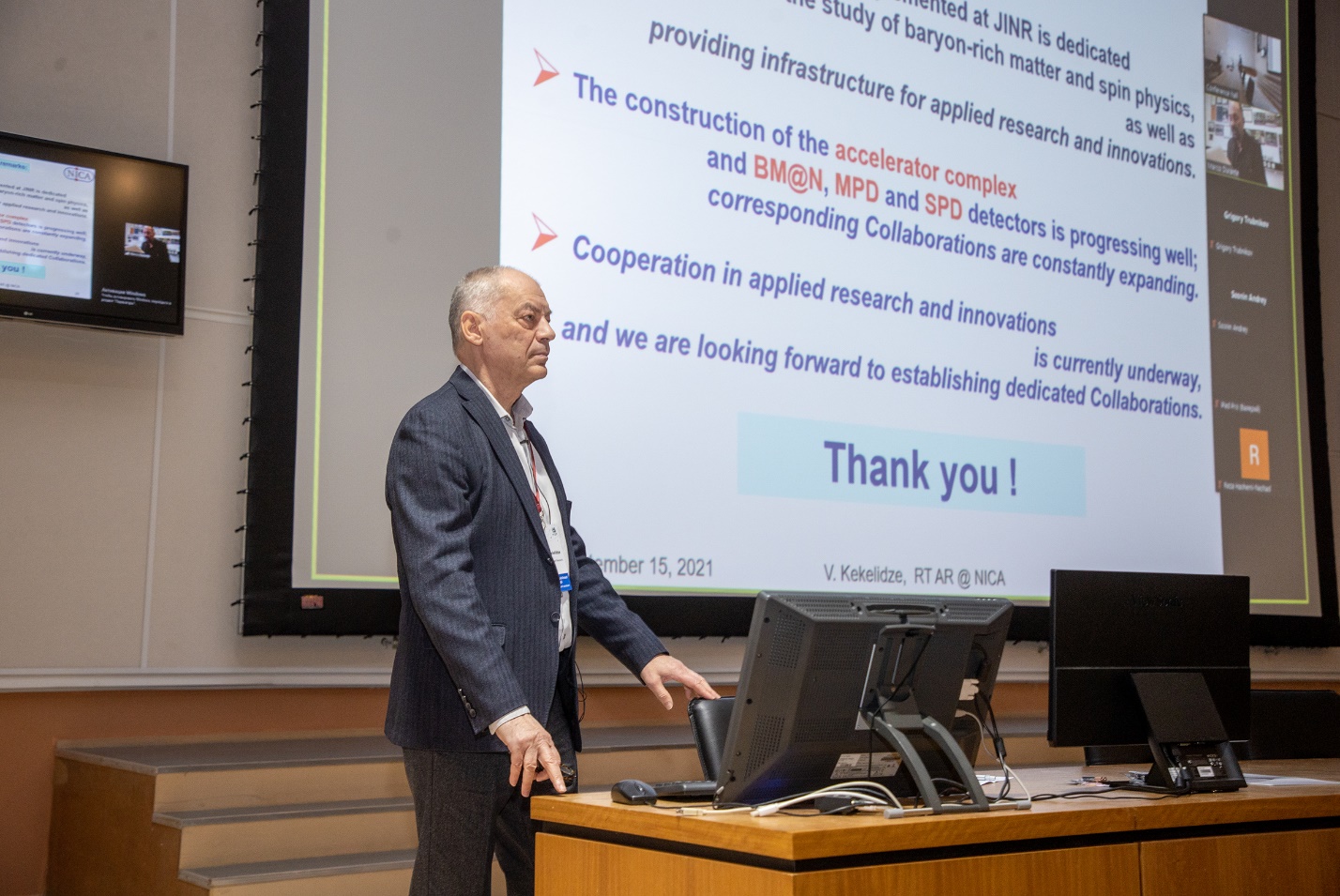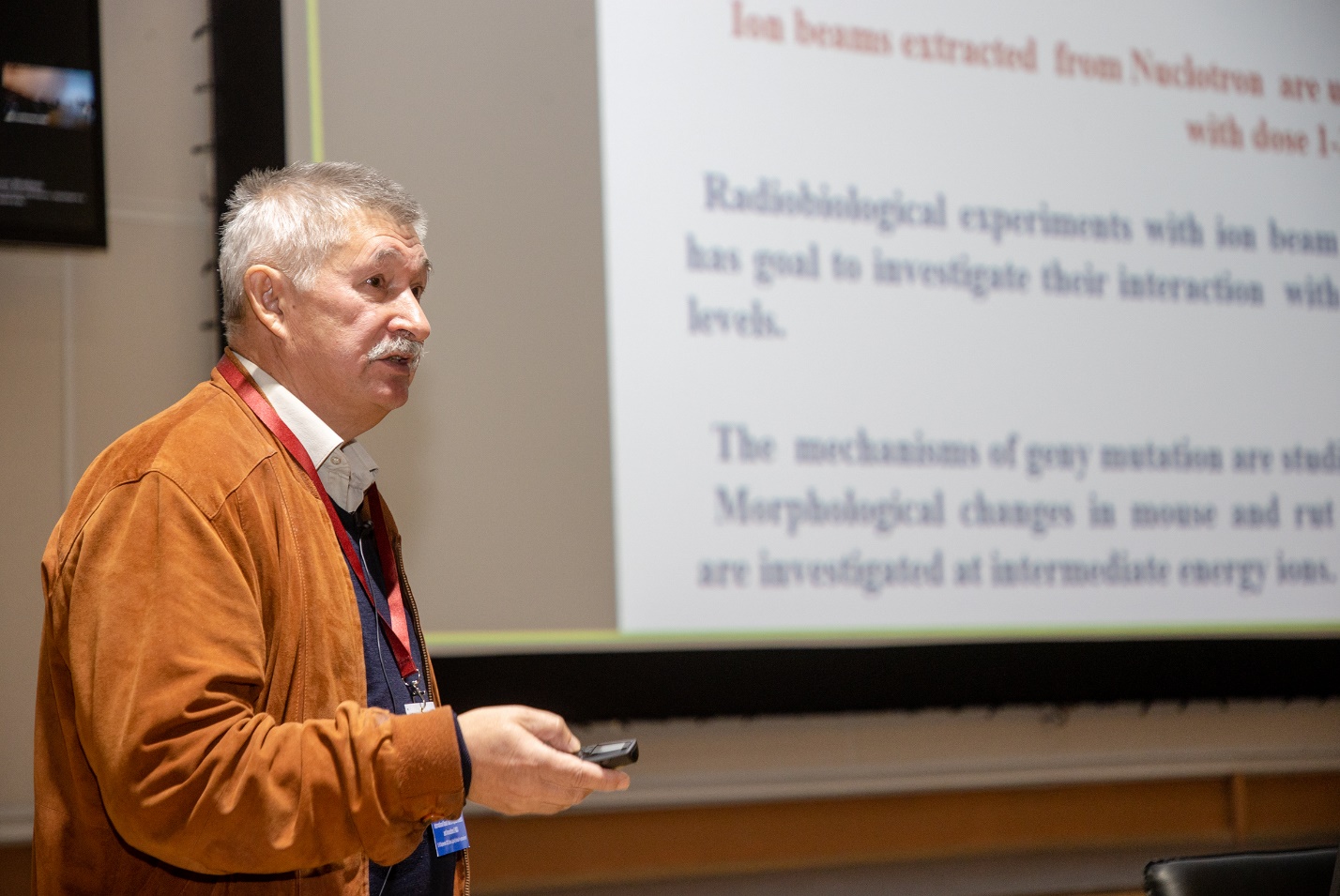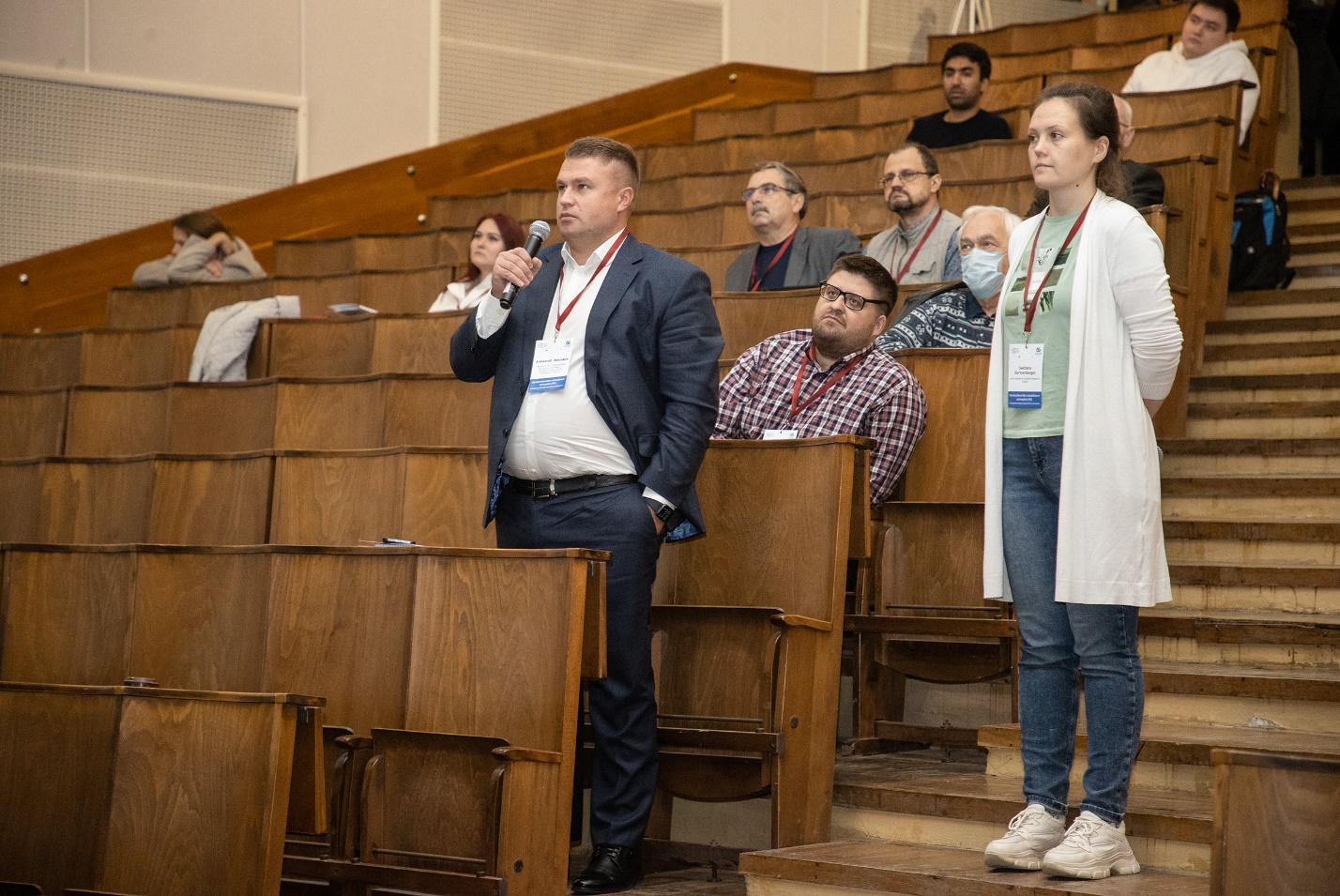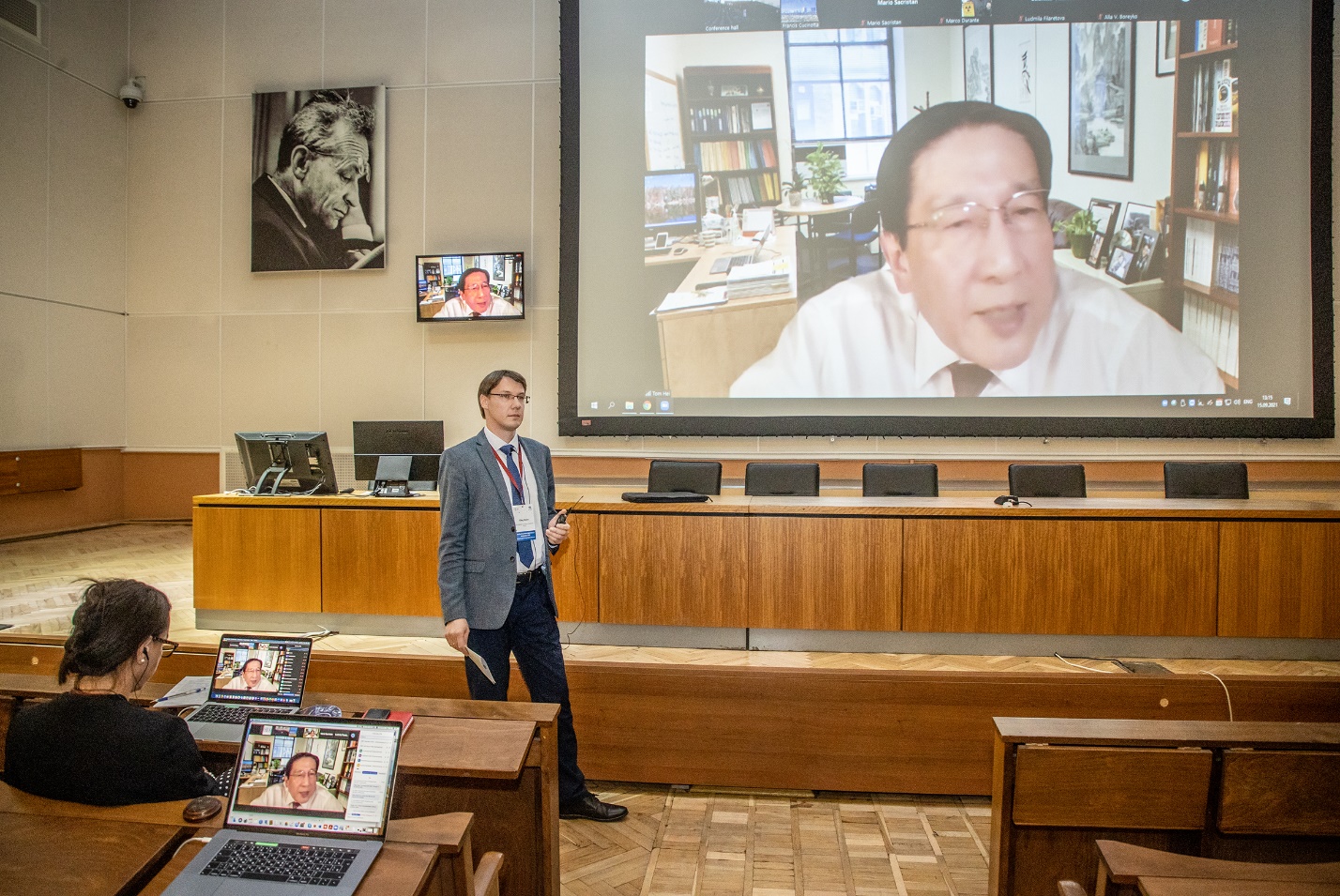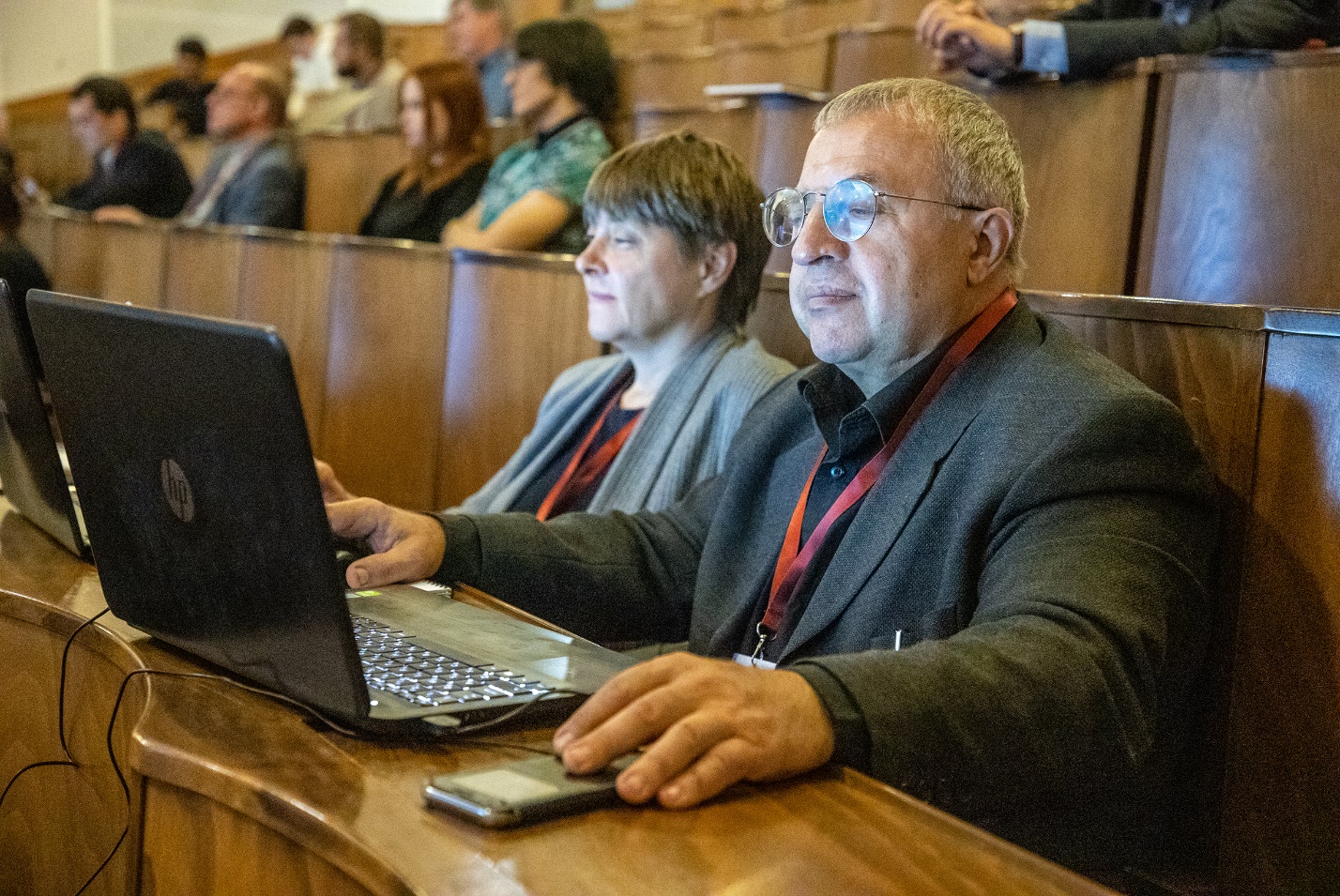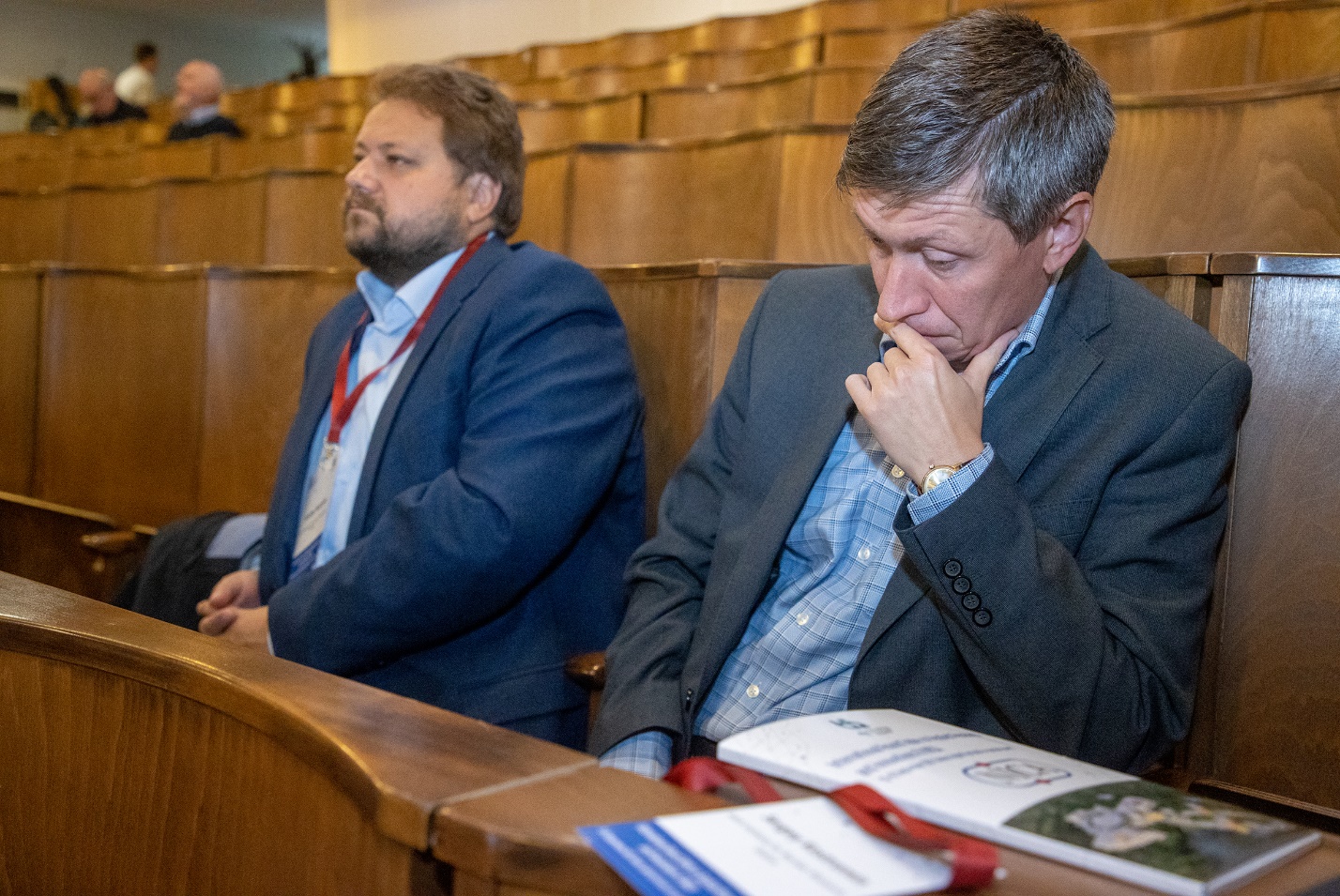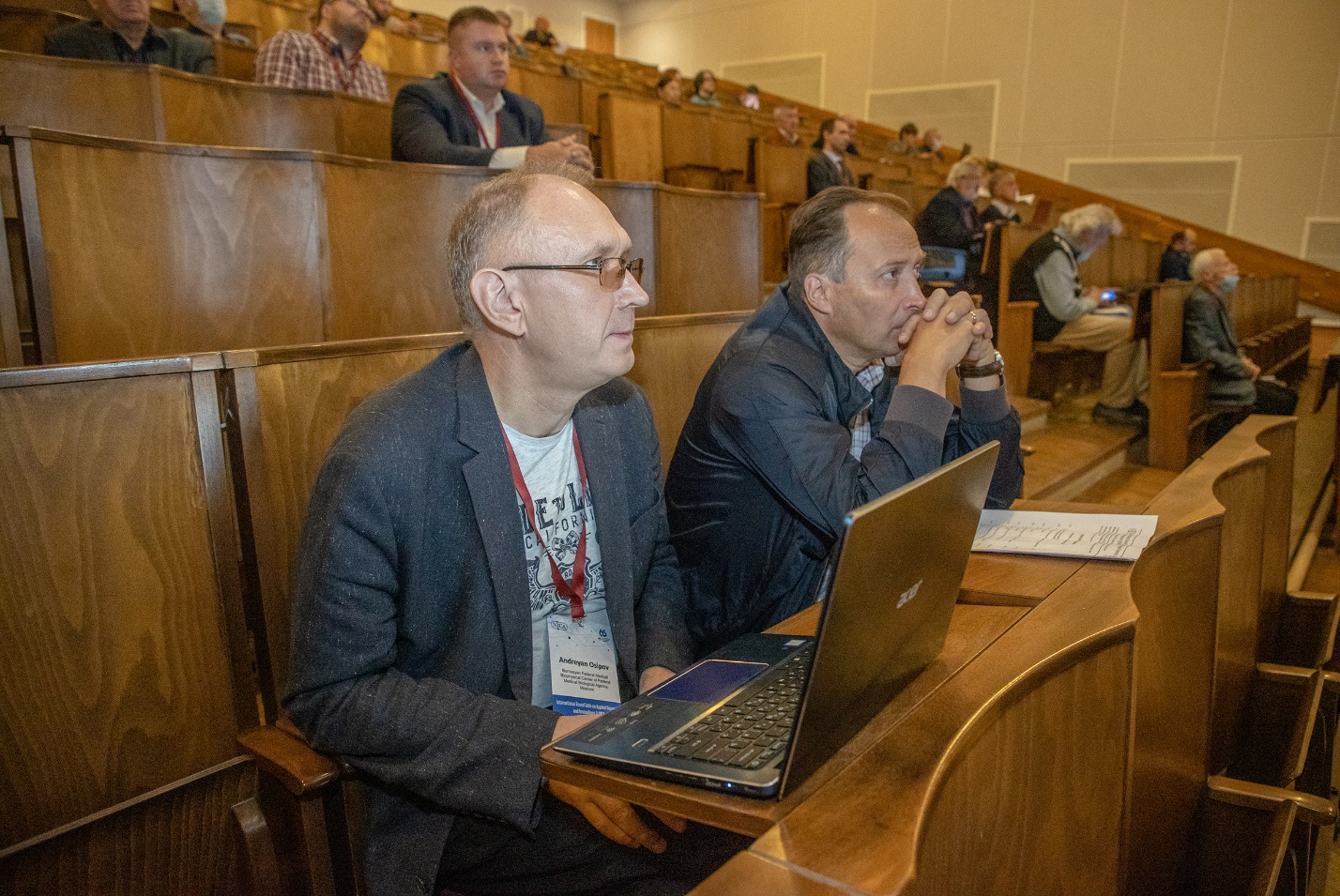Milestones of International Round Table on Applied Research and Innovations @ NICA
News, 23 September 2021
A two-day International Round Table on Applied Research and Innovations @ NICA finished in Dubna. It gathered about 300 full-time and online participants.
On 15 – 16 September 2021, the Veksler and Baldin Laboratory of High Energy Physics JINR hosted the international round table aimed to inform the wide scientific community about new opportunities of the NICA complex for applied research in the fields of modern biology and medicine, radiation resistance of semiconducting devices, radiation materials science, development of new technologies for nuclear energy. One of the key tasks of the event was to determine the interest of the scientific community in drafting an international user programme of the NICA complex in terms of applied research in the mentioned areas.
The two-day Round Table gathered about 300 participants from Australia, Belarus, Belgium, Brazil, Bulgaria, China, the Czech Republic, Germany, Italy, Japan, Moldova, Romania, Russia, the RSA, the USA, Uzbekistan, as well as from such international organizations as EARA, ESA, CERN, JINR, research institutes, R&D companies, educational institutions, and the media. The event combined online format with in-person participation of staff members of JINR and some Russian organizations.
JINR Director Grigory Trubnikov opened the meeting and provided an overview report on the Institute, its status, structure, and major goals. There was also information about prospects and vision of innovation development at the NICA complex and JINR at large.
Reports by world-recognised scientists in relevant research fields and JINR scientific groups on the proposed areas of work continued the agenda of the Round Table. It was the first time the discussion site organized by the NICA project had managed to gather the pleyad of leading representatives from leading world centres engaged in the fields of radiation studies, life sciences, space biology and medicine, radiation materials science, radiation resistance of microelectronics, advanced developments for nuclear power problems.
Guest reports were made by representatives of CERN, the European Space Agency, the European Animal Research Association, Columbia University (USA), GSI (Germany), Nevada University (USA), the University of Padua (Italy), Fermilab (USA), Sydney University (Australia), the RIKEN Nishina Center for Accelerator-Based Science (Japan), iThemba LABS (RSA), the Nuclear Physics Institute of the Czech Academy of Sciences, and a number of Russian organizations, namely the RAS Institute of Biomedical Problems, Burnasyan Federal Medical Biophysical Centre, the Institute named after I. P. Pavlov, ENPO SPELS JSC, a branch of ORKK JSC “Scientific and Research Institute of Space Engineering”. Employees of VBLHEP, FLNR, LRB, and FLNP made reports on behalf of JINR. Each day of the event was concluded with thematic discussions on the topical issues related to the necessities of potential users of ion beam transportation channels being created for applied research.
Plenipotentiary Representative of the Republic of Uzbekistan in JINR Bekhzod S. Yuldashev sent his welcoming address to participants of the Round Table.
Participants of the event paid considerable attention to possible mechanisms of cooperation of potential partner organizations with the NICA project that creates conditions for the implementation of joint initiatives and the development of the innovation development strategy for the accelerator complex in the fields of applied research.
On the sidelines of the Round Table, JINR Director Grigory Trubnikov met with Director of the RAS Institute of Biomedical Problems (IBMP RAS) Academician Oleg Orlov. The main topic of the meeting was the discussion of new prospects for the implementation of research in the fields of IBMP RAS interests using beams of the NICA complex, application of which may open up a new page in the history of cooperation of the institutes.
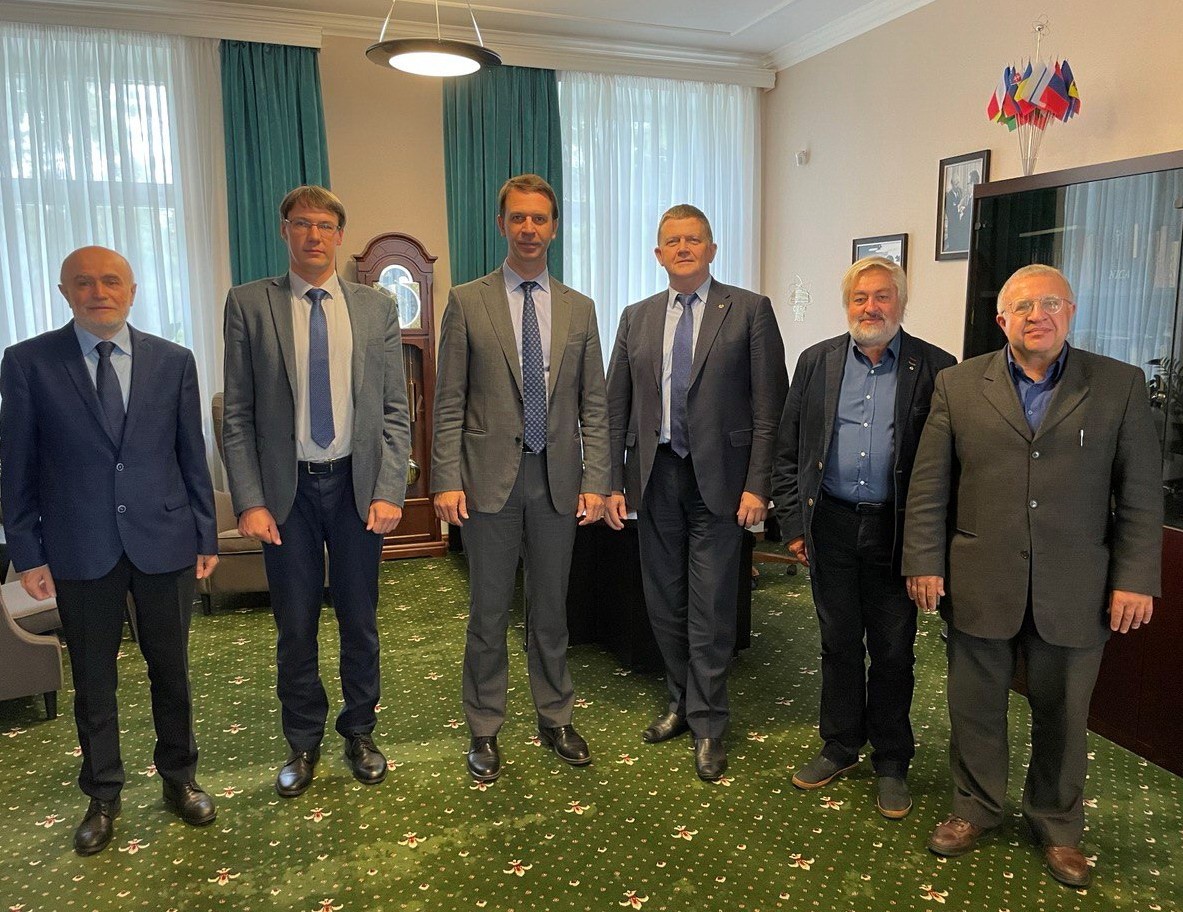 Meeting with Director of the RAS Institute of Biomedical Problems. In the photo from left to right: Alexander Sorin (JINR), Oleg Belov (JINR), Grigory Trubnikov (JINR), Oleg Orlov (IBMP RAS), Andrey Shtemberg (IBMP RAS), Vyacheslav Shurshakov (IBMP RAS).
Meeting with Director of the RAS Institute of Biomedical Problems. In the photo from left to right: Alexander Sorin (JINR), Oleg Belov (JINR), Grigory Trubnikov (JINR), Oleg Orlov (IBMP RAS), Andrey Shtemberg (IBMP RAS), Vyacheslav Shurshakov (IBMP RAS).
Based on the results of reports and discussions, a Memorandum of the Round Table was adopted. The Document reflects a considerable interest of the scientific community in the issues of organization of applied research at the NICA complex and the opinion of participants about a number of strategic issues on the further development of works.
In particular, it was proposed to work on the issues of informing potential users about key parameters and the configuration of irradiation stations at the channels being created. Taking into account the most advanced trends and user requests, participants of the Round Table recommended working on the issues of modelling galactic cosmic rays at the beams of the NICA complex using a special acceleration mode with the fast change in the type of ions and energies.
Participants of the Round Table welcomed the proposed name for the infrastructure of applied research at NICA. The name unites the channels being created – ARIADNA (Applied Research Infrastructure for Advanced Developments at NICA fAcility). Participants also approved the corresponding logo.
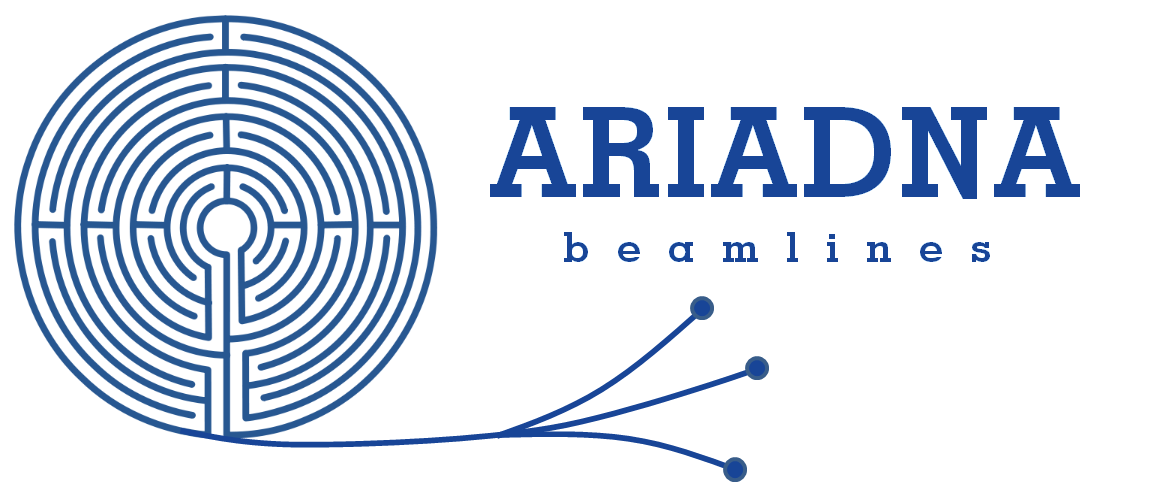
The Round Table noted with satisfaction the intent of the NICA project to establish international collaborations for the channels being created.
For better coordination of user access to the ARIADNA channel structure, the Round Table found it important to organize a centralised user programme at the NICA complex. In this regard, participants proposed working on major principles of the user policy with the view of advanced experience of other similar facilities.
A significant aspect was the recommendation of the Round Table on forming the research programme of ARIADNA basing on the proposals by users on conducting experiments with special attention to the openness principle for ideas from the international community.
For further development of identified strategic initiatives, leaders of the NICA project established an Expert Committee for applied research and innovations at the ARIADNA channels. Its first meeting took place right after the open part of the Round Table.
Participants of the Round Table highly appreciated the general strategy of the JINR innovative development presented in the report by the Institute’s Director. They also noted the importance of the NICA project entering the global landscape of facilities for applied tasks.
Specialists noted the prospects for the launch of large-scale applied research at the NICA complex as an opportunity to extend the fields of activities by young researchers, to develop JINR tools in the fields of staff training and educational activities.
JINR Director Grigory Trubnikov in his closing speech expressed gratitude to speakers, moderators of sessions and discussionы of the Round Table, as well as to organizers of the event. He proposed holding such events at the NICA complex regularly.
Read about Round Table in JINR Weekly Newspaper
Photos by Igor Lapenko
